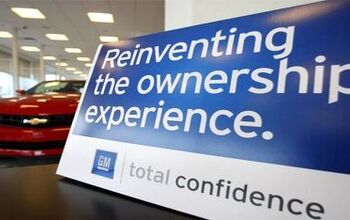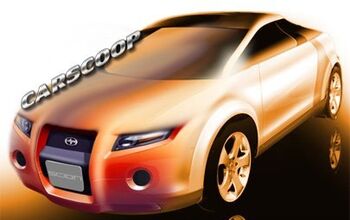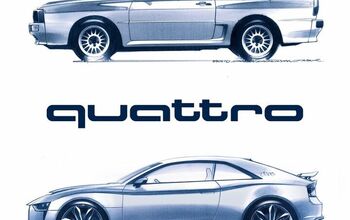Quote(s) Of The Day: Bookends Edition
QOTD is a fairly irregular exercise for us, but we’d be remiss if we didn’t dust it off for today’s marathon hearings before the House Oversight and Government Reform Committee. Needless to say, the ten-ish hour affair offered too rich a bounty of choice quotes to properly choose just one. And so we have two: the first and one of the last quotes of the day’s proceedings. The day opened with the following words from Chairman Edolphus Towns:
Good morning. I thank you all for being here. It is hard to imagine the horror of the event that took the lives of an entire family near San Diego, California on August the 28th, 2009. California highway patrolman, Mark Saylor, his wife, their 13 yr old daughter, and Mrs Saylor’s brother, Chris, were driving in a Toyota Lexus, a loaner car that the Toyota dealer provided while their car was being repaired. As they drove along the highway, suddenly the car… accelerating [sic] rapidly, he stood on the brakes, but nothing happened. No matter what he did, he could not stop the car from flying down the road, faster and faster. As this car reached top speed in just seconds, it was all he could do just to kep it under control. In a frantic call to 911, his brother-in-law, Chris, reported the gas pedal was stuck, the brakes did not work, and they were barreling down on an intersection. He yelled over the phone “hold one, hold on, hold on and pray. And those were his last words.”
Toyota has blinders on about the throttle control unit issue… I don’t know if it’s liability or if there’s a link to a coverup, but there’s a piece of the puzzle missing… I know we’ve put in a long day, but if there’s a piece missing, you don’t stop asking questions.
Yesterday’s hearings were rife with a metaphor, first introduced by the “expert witness” Sean Kane, that “we have a bookend with Dr Gilbert’s work and we have a bookend with consumer complaints.” In short, there are myriad explanations for unintended acceleration, but only an undetectable electronic problem (as suggested by Dr Gilbert’s research) can explain the scenarios described by complaints of unintended acceleration.
Similarly, these two quotes form convenient bookends to the last two days of congressional hearings. On the one hand, the emotional appeal in the form of an inexplicable narrative. On the other, the sense of anger and frustration at congress’s inability to make sense of these mystifying yet troubling anecdotes, with the less than subtle implication that Toyota is hiding something from the bright light of the committee’s investigations. In both cases, the bookends are are necessary only because of the profound lack of rational explanations for many of the stories of sudden unintended acceleration. And in both cases, they represent individuals striving for complex, yet satisfying explanations, when less gratifying but eminently logical explanations (like a combination of pedal obstruction, sticking pedals, and human error) are as obvious as they can be.
Meanwhile, Toyota’s response to these rumors in the corridors of power (see the video above) is straightforward and impressively nerdy. What the innuendo-mongerers in congress fail to understand is that if they simply chided Toyota for its slowness to react to customer complaints and poor global communication, they’d still be seen as defenders of their constituents’ safety, and rightly so. By following Mr Kane’s pied piping of possible yet untraceable electronic gremlins, they’ve run the risk of turning a teachable moment into a recreation of the Audi 5000 frenzy. Which would make for a pair of interesting bookends to the history of unintended acceleration.
More by Edward Niedermeyer
Latest Car Reviews
Read moreLatest Product Reviews
Read moreRecent Comments
- W Conrad I'm not afraid of them, but they aren't needed for everyone or everywhere. Long haul and highway driving sure, but in the city, nope.
- Jalop1991 In a manner similar to PHEV being the correct answer, I declare RPVs to be the correct answer here.We're doing it with certain aircraft; why not with cars on the ground, using hardware and tools like Telsa's "FSD" or GM's "SuperCruise" as the base?Take the local Uber driver out of the car, and put him in a professional centralized environment from where he drives me around. The system and the individual car can have awareness as well as gates, but he's responsible for the driving.Put the tech into my car, and let me buy it as needed. I need someone else to drive me home; hit the button and voila, I've hired a driver for the moment. I don't want to drive 11 hours to my vacation spot; hire the remote pilot for that. When I get there, I have my car and he's still at his normal location, piloting cars for other people.The system would allow for driver rest period, like what's required for truckers, so I might end up with multiple people driving me to the coast. I don't care. And they don't have to be physically with me, therefore they can be way cheaper.Charge taxi-type per-mile rates. For long drives, offer per-trip rates. Offer subscriptions, including miles/hours. Whatever.(And for grins, dress the remote pilots all as Johnnie.)Start this out with big rigs. Take the trucker away from the long haul driving, and let him be there for emergencies and the short haul parts of the trip.And in a manner similar to PHEVs being discredited, I fully expect to be razzed for this brilliant idea (not unlike how Alan Kay wasn't recognized until many many years later for his Dynabook vision).
- B-BodyBuick84 Not afraid of AV's as I highly doubt they will ever be %100 viable for our roads. Stop-and-go downtown city or rush hour highway traffic? I can see that, but otherwise there's simply too many variables. Bad weather conditions, faded road lines or markings, reflective surfaces with glare, etc. There's also the issue of cultural norms. About a decade ago there was actually an online test called 'The Morality Machine' one could do online where you were in control of an AV and choose what action to take when a crash was inevitable. I think something like 2.5 million people across the world participated? For example, do you hit and most likely kill the elderly couple strolling across the crosswalk or crash the vehicle into a cement barrier and almost certainly cause the death of the vehicle occupants? What if it's a parent and child? In N. America 98% of people choose to hit the elderly couple and save themselves while in Asia, the exact opposite happened where 98% choose to hit the parent and child. Why? Cultural differences. Asia puts a lot of emphasis on respecting their elderly while N. America has a culture of 'save/ protect the children'. Are these AV's going to respect that culture? Is a VW Jetta or Buick Envision AV going to have different programming depending on whether it's sold in Canada or Taiwan? how's that going to effect legislation and legal battles when a crash inevitibly does happen? These are the true barriers to mass AV adoption, and in the 10 years since that test came out, there has been zero answers or progress on this matter. So no, I'm not afraid of AV's simply because with the exception of a few specific situations, most avenues are going to prove to be a dead-end for automakers.
- Mike Bradley Autonomous cars were developed in Silicon Valley. For new products there, the standard business plan is to put a barely-functioning product on the market right away and wait for the early-adopter customers to find the flaws. That's exactly what's happened. Detroit's plan is pretty much the opposite, but Detroit isn't developing this product. That's why dealers, for instance, haven't been trained in the cars.
- Dartman https://apnews.com/article/artificial-intelligence-fighter-jets-air-force-6a1100c96a73ca9b7f41cbd6a2753fdaAutonomous/Ai is here now. The question is implementation and acceptance.

































Comments
Join the conversation
As far as I know, the brakes in the California highway patrolman's Lexus are entirely hydraulic. Therefore, they cannot be affected by software logic errors or electrical problems. Furthermore, the brakes are always stronger than the engine. If you shove hard on the brake pedal and don't let up, the car WILL stop even if the transmission remains in gear and the engine is screaming at full throttle. A highway patrolman should be an expert driver capable of handling emergencies. Partly this is so that he can drive well himself and partly it is so that he can competently evaluate civilians' driving in order to write tickets. This incident was caused by driver failure as much as by mechanical failure. I hope the California Highway Patrol learns from it and improves its driver training program.
I agree that not all manufacturers have software which allows the brake signal to override the throttle input - but they should. There's absolutely no reason not to do it (other than offending the oafs who drive with two feet, which I mentioned earlier). Since the inputs are all there, and it certainly makes the car safer in the event of any mishap, I just don't see the reason not to add a few lines of code. I know that GM and Chrysler have had a brake override since they first introduced electronic throttles (o.k., so that's only one major manufacturer). But still, since there's no rational reason to allow the throttle signal priority over the brake, why not use the tools in your possession to do something about it. The argument that "they never had brake override when throttles had cables" doesn't fly either. Just because they didn't have them doesn't mean they wouldn't have been a good idea, if feasible. Brake override software in the electronic throttle control era is easy, costs almost nothing, and makes the car much safer in the event of a stuck pedal, electrical malfunction, misplaced feet, or any other scenario yet to be imagined. All you Best & Brightest out there with non-Toyota cars that equipped with electronic throttles: try applying the brake and throttle at the same time (with the car moving) and see what happens. I'd bet that most of them limit engine torque at some point. And finally, I agree that stopping a car with the throttle wide-open is possible, but the window to do so is not very long. If the brakes get too hot, fluid inside the caliper boils, and you lose braking force. I don't think your average passenger car has a lot of headroom for overheating the brakes, so you may be able to haul it to a stop (if you react quickly for forcefully in applying the brake), but if try to just slow it down for a while, the brakes will cook and it's game over (unless you have the presence of mind to turn the ignition off or put it in neutral). When a person is panicking, the best thing that can happen is to have the engine control software react quickly and reduce engine power.